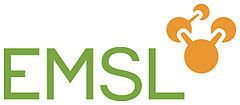Established Oct. 1, 1997 Staff ~150 Instruments 150 plus | Director Liyuan Liang Patents 84 | |
 | ||
Field of research Biological science, chemical science, environmental science Users 10,000+ in 15 years, 700 per year Fields of research Biology, Environmental science | ||
Environmental molecular sciences laboratory emsl b roll
EMSL (pronounced em-zul), or the William R. Wiley Environmental Molecular Sciences Laboratory, is a national scientific user facility located at Pacific Northwest National Laboratory in Richland, Washington. EMSL is funded by the Department of Energy’s Office of Biological and Environmental Research. EMSL provides experimental and computational resources to address the environmental molecular science challenges facing DOE and the nation.
Contents
- Environmental molecular sciences laboratory emsl b roll
- Research
- Capabilities
- Expertise
- History
- EMSL directors
- References
EMSL offers the global scientific community a range of capabilities and expertise. Access to EMSL’s capabilities is gained through a peer-reviewed proposal process. If a proposal is accepted and the scientist publishes in the open literature, there typically is no charge for using the EMSL instrumentation and capabilities. EMSL provides proposal opportunities throughout the year.
Since it opened in 1997, scientists from all 50 states and more than 35 countries have used EMSL to support their scientific efforts.
Research
Research at EMSL is focused on gaining an understanding of the physics, chemistry and biology governing environmental processes starting at the molecular scale and propagating to larger scales. EMSL’s research focus has been defined into four science themes.
Capabilities
EMSL capabilities include:
- Cascade Supercomputer – Theoretical peak processing speed of 3.4 petaflops. 1440 compute nodes with conventional Xeon processors plus Intel Xeon Phi "MIC" accelerators. 128 GB memory per compute node. 2.7 petabyte shared parallel filesystem (60 gigabytes per second read/write)
EMSL facilities include a Quiet Wing that opened in early 2012 and a EMSL's RadEMSL (Radiochemistry Annex) that opened to the global user community in the spring 2014.
Expertise
EMSL staff and scientific consultants are experts in chemical, physical, biological and computational sciences. They have received numerous awards, been named to society fellowships, have received patents and publish in scientific journals. Since 2009, EMSL staff members have received nearly two dozen awards and honors. In fiscal year 2010, EMSL staff and user research appeared in more than 350 articles, including many in journals, such as Science, Nature, Proceedings of the National Academy of Sciences and Journal of the American Chemical Society.
History
The beginnings (1986–1997)
The idea that would become EMSL began in 1985 with a National Academy of Sciences report entitled Opportunities in Chemistry. The report identified scientific challenges relating to energy and the environment that required fundamental research to achieve a solution. Then director of PNNL William R. Wiley and lab senior managers met to discuss the report and how PNNL could respond to the nation’s scientific challenges that were critically dependent on fundamental advances in chemistry. Their recommendations would become EMSL, a center with advanced instrumentation for the study of molecular-level chemistry.
Wiley envisioned a facility where the research was conducted in an integrated and collaborative manner. “Problems don’t come in small, unique, compartmentalized packages. We must recognize the interrelationships,” said Wiley.
Ohio-based Battelle Memorial Institute, which operates PNNL for the U.S. Department of Energy, approved $8.5 million in funding over four years to establish the facility; develop research programs; and obtain the equipment, facilities, scientists and staff to support these programs.
The DOE authorized PNNL to proceed in October 1993, and PNNL began construction of the facility in July 1994. The facility was dedicated on October 16, 1996, in honor of Wiley, who died three months earlier. Construction was completed in August 1997. Then-DOE Secretary Hazel O'Leary delivered the dedication speech and Wiley’s wife, Gus, cut the ribbon. EMSL opened Oct. 1, 1997, for full operation as DOE’s newest national scientific user facility.
The early years (1997–2001) During its first five years, EMSL operations focused on building capabilities, recruiting scientific leadership and attracting users. The scientific focus then expanded to include biology, particularly the study of naturally occurring microbes for environmental cleanup, alternative energy, and carbon dioxide reduction in the atmosphere – critical challenges addressed by DOE.
EMSL’s early user program focused on single investigator studies – particularly those Wiley championed that crossed disciplinary boundaries – and quickly reached more than 1,000 users per year, representing every state and several foreign countries.
A maturing program (2001–2009) In this period there were two grand challenges. These challenges were team-based, multi-investigator research efforts targeted on two key challenges related to DOE missions:
EMSL recently refined its scientific focus into four Science Themes:
In January 2007, EMSL celebrated its first permanent expansion: a nearly 4,000-square-foot raised floor within its high-performance computing operations center to accommodate a more powerful supercomputer. In April 2008, EMSL dedicated a new office pod to distinguished user J. Mike White that houses nearly 100 staff and users. At the same time, EMSL management began pursuing plans for a Radiochemistry Annex and a Quiet Wing.
Building for the future (2009 to present)
In 2009, DOE announced a $60 million investment in capabilities for EMSL from the American Recovery and Reinvestment Act, or ARRA. EMSL used the funds to upgrade some existing capabilities, as well as developing and deploying totally new systems and capabilities.
At this same time, EMSL directed capital funds toward construction of the $8 million Quiet Wing to house up to eight microscopy instruments. The Quiet Wing opened in early 2012. Additionally, EMSL moved forward with plans for a radiological chemistry capability with a Radiochemistry Annex, slated to open in 2014.
